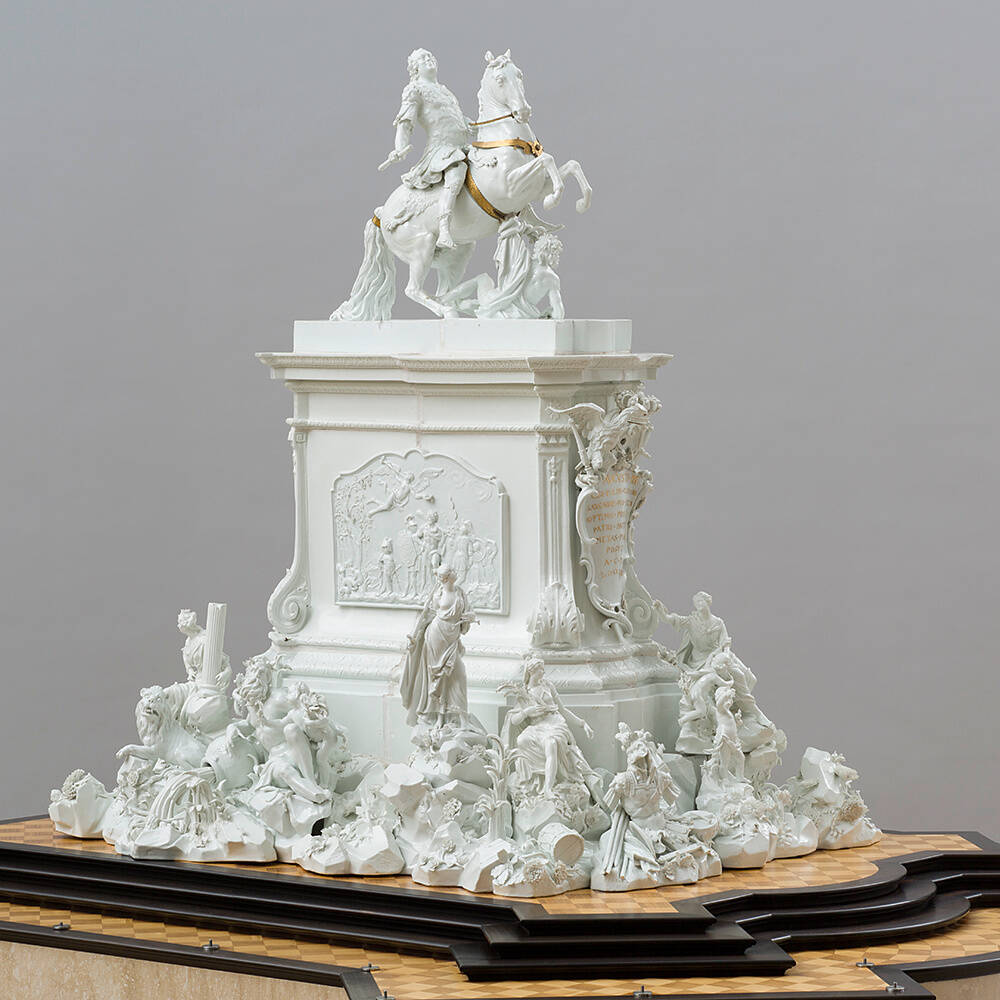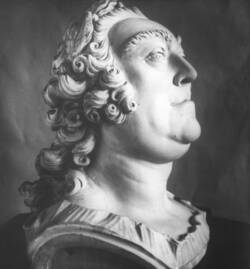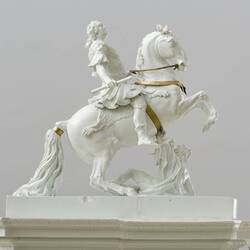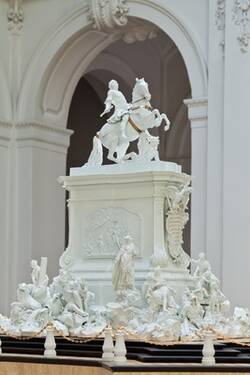Johann Joachim Kaendler designed a larger-than-life equestrian statue of August III, King of Poland. In size and ambition, this monumental porcelain work would have far surpassed anything before it. In 1753, to give the king an idea of how it would look, Kaendler initially made a much smaller model. The allegorical figures around the base symbolise the king’s virtues, such as justice, faith, hope and love – just those qualities making a good ruler. The Seven Years War, though, put paid to Kaendler’s plans for this ambitious work and the statue remained just a model.
Further Media




At the base of the equestrian statue, a wealth of allegorical figures symbolise the virtues of August III, King of Poland. For example, there are figures standing for justice, faith, hope and love – the qualities of a good ruler.
Let’s look more closely at a few details. The background of the relief on the pedestal's right-hand side is decorated with a church. This seems very similar to Dresden’s Hofkirche – the court church – and so here references August’s role as defender of the Christian faith. This was, though, rather a delicate issue. As kings of Poland, the Saxon rulers had to be Catholic – yet in Saxony, the homeland of the Reformation, they also remained head of the Protestant church, a position they held right up until 1918.
In the right lower foreground of the relief, two putti are investigating the world with the help of a globe, a set of dividers and a telescope. The seated figure next to them is Minerva, goddess of the arts and of wisdom. With these figures, Kändler evokes Friedrich August’s support for the arts and the sciences.
Under the relief, a bearded river deity is leaning against a large vase with water pouring out of it. This god represents the River Elbe. On the other side of the model, there is another similar figure – in this case symbolising the River Weichsel. In his right hand, the River Elbe deity holds a cornucopia, overflowing with the riches of Saxony. These include little rings – a reference to the country’s silver mines. The little goblet stands for Meissen porcelain since it contains kaolin, a type of clay mineral plentiful in Saxony and previously never exploited. Now, though, thanks to hard work, scientific knowledge, expertise and artistic ingenuity, the kaolin was producing porcelain – not only a sensation across Europe but also a cause for envy. In fostering the sciences, Friedrich August II, as Elector of Saxony and August III of Poland, had brought his country a new golden age.
- Location & Dating
- Meissen, 1753
- Material & Technique
- Porcelain, unpainted, gilt brass mounts
- Dimenions
- H. 123,0 cm, B. 94,0 cm, T. 117,0 cm
- Museum
- Porzellansammlung
- Inventory number
- PE 2528